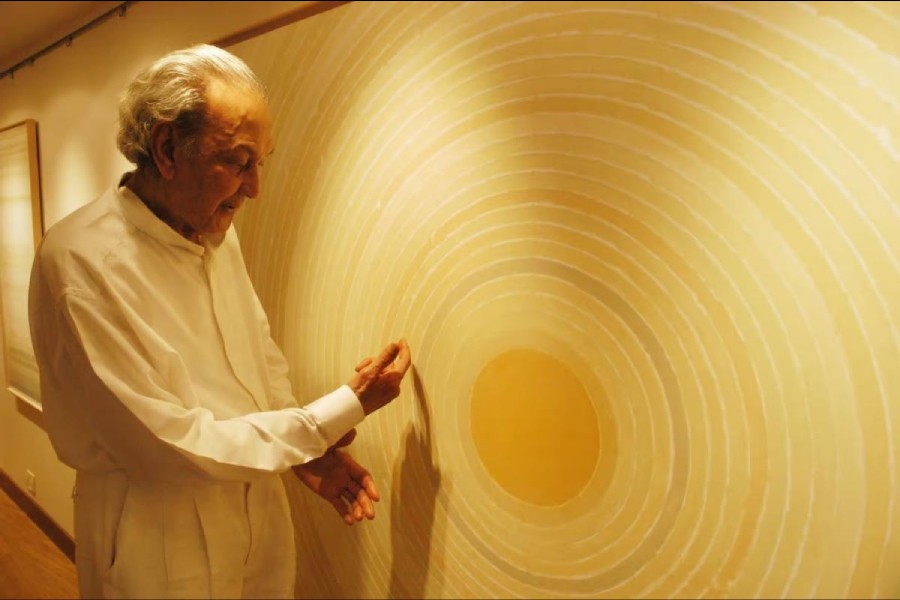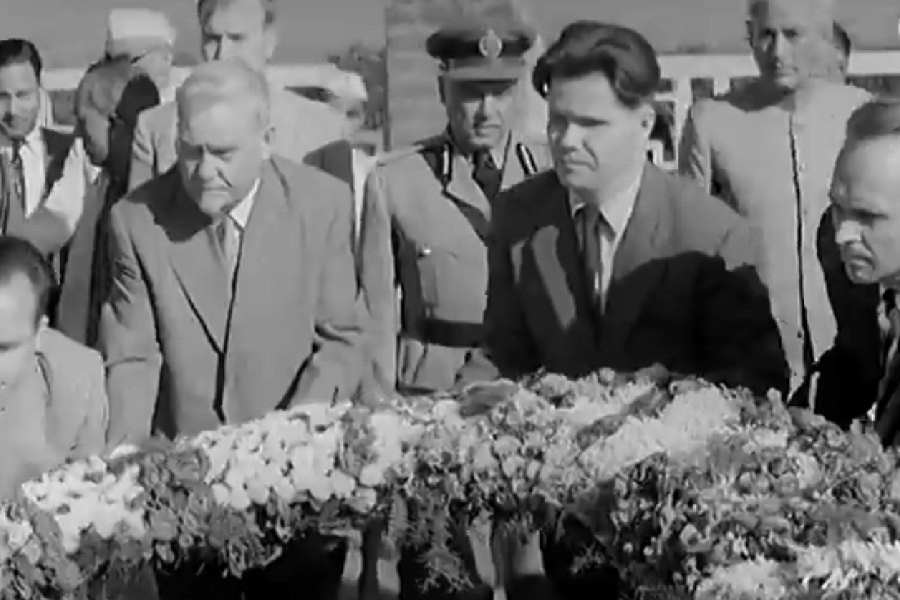Book: CELEBRATION AND PRAYER: LIFE AND LIGHT IN RAZA’S ART
Author: Ashok Vajpeyi
Published by: Speaking Tiger
Price: Rs 599
“Everything,” Wassily Kandinsky had once said, “starts from a dot.” And so it did for Sayed Haider Raza when his teacher, Nandlal Jharia, drew a dot or ‘bindu’ on a wall in the school and asked his restless pupil to concentrate on it. Little did Jharia know that he was sowing the seed that would release the “[i]mmense energy and potential” that was latent in this modernist master. In this bindu, Raza found “possibilities... so enormous a whole lifetime [was] not enough” to explore them. And it was not. Raza remained immersed in the intrinsic geometry of the world till the very end of
his long and productive career, which he meditates on at length in this book by Ashok Vajpeyi.
Although it traces the roots of Raza’s life and work, Vajpeyi’s book cannot strictly be called biographical in the way that, say, Sayed Haider Raza: The Journey of An Iconic Artist by Yashodhara Dalmia or even Raza: The Other Modern was. It follows a unique structure at the crux of which is an interview of Raza by Vajpeyi. But much like one of Raza’s concentric bindus, one arrives at this core after going through the outer layers or chapters that emanate from it, arming the lay reader with the artist’s history, his thoughts, spirituality and motivations. Written in lucid and lyrical prose and mostly shorn of a technical lexicon, this slim volume is as much a reflection on Raza’s unique idiom as it is on ways of looking at and feeling the pulse of modern art, which has accrued the reputation of being incomprehensible.
Vajpeyi — a poet, former civil servant, cultural critic, close friend of Raza and managing trustee of the Raza Foundation — begins with a brief but meticulous biographical sketch, peppered with personal anecdotes and the artist’s own thoughts, delineating the influence of nature, music and, most importantly, poetry on Raza with special emphasis on his syncretic belief system and the deep influence of M.K. Gandhi and Vinoba Bhave on his life and art. These elements form the first layer of the book, offering readers the broad brushstrokes that can be found across Raza’s work.
The book then zooms further into Raza’s idiom, exploring concepts of time, space, lines and colour. This is where the book stood the risk of getting esoteric. But it does not. Ever the consummate poet, Vajpeyi conveys fairly complex ideas like space and non-space in terms of feelings, both in Raza as the artist and, in turn, in his viewers. The words and the worldview of Rilke — one of Raza’s favourite poets — bring this layer to a full circle, helping Vajpeyi expose the “core of every core, the kernel of every kernel...” of the building blocks of Raza’s art.
Zooming in, though, rarely gives a full picture. The next layer thus requires taking a step back. Raza’s work evolved in conjunction with his contemporaries and his students, with whom he was constantly in dialogue, and was shaped by his upbringing and his surroundings — for instance, his rare sensibility was shaped as much by the culture of the two great cosmopolitan cities in the world, Bombay and Paris, as it was by his childhood in densely-forested Madhya Pradesh where nature evoked in him fear and awe in equal measures.
It is armed with these layers of knowledge that readers arrive at the crux of the book — a freewheeling interview where Raza speaks to his friend, Vajpeyi, about his inspirations and anxieties as an artist. While interviews of Raza are not rare, there is something precious about this one not just for its candidness but because of the intuitive questions that Vajpeyi asks, such as one about the choice of colours, in response to which the artist makes an illuminating link between the corporeal and the spiritual and how everyday realities informed the shades on his canvases. Another question and reply that explore how Raza’s acute interest in the human condition helped him rise above politics — the apolitical nature of his works is often held against him — are also astute.
A poem written by Vajpeyi for the artist on his 80th birthday brings the book to a close and is the perfect summation of this journey into the centre of the world of S.H. Raza.











